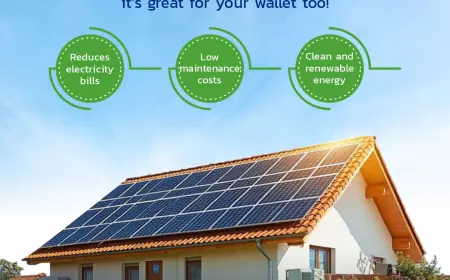How To Identify and Quantify Materials in Construction Takeoffs
Learn how to accurately identify and quantify materials in construction takeoffs! Follow these expert steps and best practices to ensure precision and success in your projects.

Identifying materials in construction takeoffs includes multiple systematic steps to make sure that quantification is spot-on! From reviewing project documents to submitting your takeoffs to clients, you must know what things are necessary. Quantifying correctly is the foundation of a successful project. A minor mistake in the construction takeoffs will lead you to waste materials, budget overruns, and waste of time!
If you are facing difficulties in quantifying your residential, commercial, or industrial projects then hire a reliable construction company. Because leaving your projects to guesses is a huge risk. It can derail your construction projects which is why depend on expert opinions and expertise. One of the best recommendations for cost estimation services nowadays is SMA Estimating LLC who use modern tools to deliver exact takeoffs.
In this article, you will get to know how to identify and quantify materials in construction takeoffs!
How to Determine Construction Materials?
Analyze Blueprints Deeply
Investigate the project architecture, structure, MEP drawings, and other details deeply to understand what the project is demanding. Make sure you know about every specification of the project to know the types of materials required and their quality standards.
Organize by Trade or Discipline
You can identify construction materials for takeoffs by categorizing them by trades (e.g., concrete, framing, electrical) to make the whole process easier to handle.
Use Takeoff Software
Make use of advanced tools and technology like Bluebeam, PlanSwift, or On-Screen Takeoff. These digital solutions are best for measuring materials quantities that help to accurately determine materials with very few errors.
Create a Checklist for Ease
To work faster and more accurately you can create a checklist that involves all the materials and detail required for the project. This way guarantees you that nothing is ignored during the takeoff process.
Cross-Reference Specifications with Drawings
Match all the materials listed with the project drawings to check does they align with the specs. You must check any disparities in the process and work hard to solve them with your project team.
Detailing the Materials
-
For the details of the materials, you must note the type and size like wood, concrete, steel, and size e.g., 2x4 lumber, 10mm rebar) of each material.
-
After that, measure the exact quantity needed in linear feet, square footage, cubic yards, or number of units.
-
Also, analyze the quality and grade of the construction materials
Don’t Overlook Waste and Overages
Every construction project has a waste that wastes your budget too! That is why never overlook a waste factor to look into materials loss.
Document and Itemize
Do not mix up your material details and make it difficult to read for the clients. List each material properly and categorize them clearly. You can organize by including detailed descriptions, quantities, units of measure, and any relevant notes.
Consult with Experts
For a better understanding of the construction materials, you can have a detailed meeting with project engineers, architects, and experienced contractors. This will polish your skills to identify materials in construction takeoffs.
Review and Verify
When you are done with identifying and quantifying the materials, do not forget to recheck them before delivering. It might help to have a second set of eyes review the takeoff.
Best Practices for Effective Takeoffs!
Working as a professional for quantifying materials or estimating them is not as easy a task as may it seem! One has to be clever and sharp-minded to not overlook any project detail. If you fail to cover any small detail, your project is going to face huge problems. That is why prepare yourself to go through every kind of challenge! Following are the best practices for accurate and effective takeoffs.
-
Stay clear on your goals! Your takeoff should be organized and structured so use digital solutions to maintain a clear and logical order.
-
Keep yourself updated with every change in the project. Adjust your takeoffs and estimate accordingly.
-
Do not create any communication gap with architects, engineers, and other stakeholders. Regular contact helps to prevent any misunderstandings.
-
If you have a team, regularly train them and keep them updated with the latest software and tools.
Conclusion
To sum it all up, accuracy in identifying and quantifying construction takeoffs is necessary. If you want your project to be executed successfully, you do not have any option other than being accurate in the takeoff and estimates process. That is why search for the Best construction estimating company and rely on their experience and expertise. These cost consultants are able to handle every type of project and you will never have to face over-budgeting. By following the steps outlined above and adopting best practices, you can ensure that your material takeoffs are precise, comprehensive, and reliable.
What's Your Reaction?
 Like
0
Like
0
 Dislike
0
Dislike
0
 Love
0
Love
0
 Funny
0
Funny
0
 Angry
0
Angry
0
 Sad
0
Sad
0
 Wow
0
Wow
0

















































